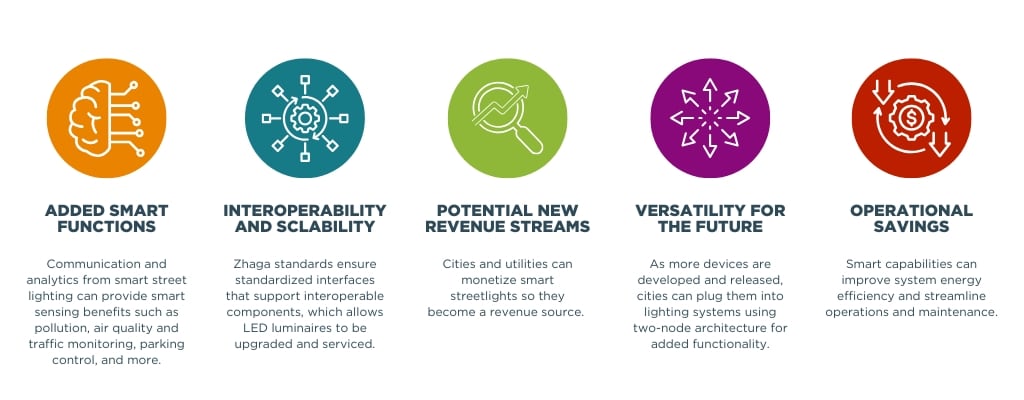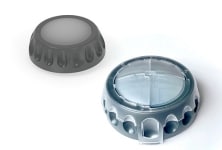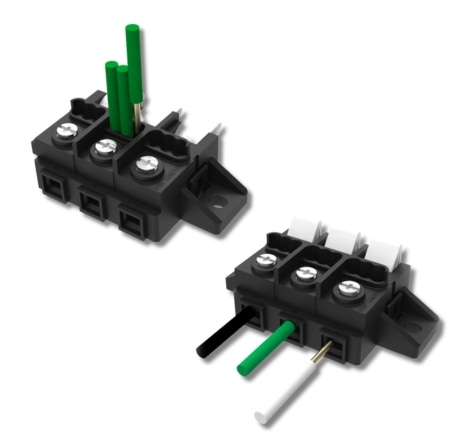Hear from TE Connectivity experts as they dive into two-node architecture technology and its role in advancing the lighting industry.

THE FUTURE OF STREET LIGHTING LIT RIGHT
As an industry leader in the development of two-node architecture, TE Connectivity (TE) provides an extensive portfolio of flexible and reliable solutions for smart street lighting systems.
What are the benefits of two-node architecture?
The concept of smart cities has been discussed for many years, and technology advancements are beginning to bring the idea closer to reality. The Zhaga-D4i ecosystem is the backbone of this movement, as it is a cost-effective way for widespread development and deployment of smart city sensors and technologies, eliminating the need for one organization to provide the end to end solution. Different parties can provide products matching their expertise; luminaire manufacturers can provide luminaires, photocell manufacturers photocells, and sensor manufacturers sensor nodes. Modernizing street lighting architecture with two-node luminaries and smart controllers can deliver significant benefits for cities, municipalities, and utility companies.

Join TE engineers Alex King and Jonathan Catchpole as they discuss how the LUMAWISE Endurance N Enhanced Base can help you bring your streetlighting control node to market faster, with greater reliability, and fewer engineering resources.
Two-Node Architecture
Zhaga Book 18 Standard
In 2010 Zhaga, a global lighting industry consortium, was formed to standardize LED component interfaces in luminaires. Recently, their mission has expanded to include interoperability of components. In partnership with The DALI Alliance, they have developed the D4i protocol and the Zhaga-D4i certification program for IoT-ready lighting fixtures. The Zhaga Book 18 Standard and the Zhaga-D4i certification was designed specifically for LED lighting and differs from ANSI C136.41 in that the PSU is incorporated into the luminaire instead of the photocontrol, either as part of the LED driver or separately. This simplifies the wiring of the lighting fixture’s control nodes, and the digital communication protocol allows for two-node architecture.
The two-node architecture incorporates an upward-facing node, to house a photocell or communication node, and a second node for motion or other sensor types for which a downward viewing angle is appropriate. The communication bus is designed specifically for the D4i protocol. The sensor nodes themselves are smaller and easier to seal against ingress from dust and precipitation. With a new generation of interchangeable drivers, Zhaga expands the capabilities of outdoor lighting fixtures to act as a platform for sensors and communication devices. In the future, we expect to see sensors for vehicles or pedestrian counting, traffic reporting, pollution detection, and other purposes.

(1) Control Device – Zhaga-D4i Certified; (2) Zhaga Book 18 Interface; (3) Auxiliary Power; (4) Built-In Auxiliary Power Supply Unit (PSU); (5) LED Driver; (6) Light Emitting Diode (LED) Module; (7) D4i Communication Bus; (8) Zhaga Book 18 Interface; (9) Control Device – Zhaga-D4i Certified.
Our LUMAWISE Endurance S Zhaga Book 18 connector system enables D4i-controlled Zhaga Book 18-compliant luminaires, while the Endurance S Keyed Connector System enables non-Book 18 applications like Z10. Our LUMAWISE Endurance S includes a receptacle, mounted to a street or area light fixture, as well as several bases and domes forming a robust enclosure for sensor modules and network lighting control systems. The design is compact, and UV-resistant, and the IP66 seal is rated and can be mounted on the top, bottom, or even the side of a luminaire, offering flexibility to the designer. Offered in both Zhaga Book 18 and Z10 enabled keyed varieties, the S2 receptacle introduces a two-wire-per-contact solution for ease of wiring and applied cost savings in luminaires with two-node architecture.
Hybrid Two-Node Architecture
Zhaga/ANSI
Hybrid Two-Node Architecture
The hybrid two-node architecture leverages the dominance of ANSI C136.41 while taking advantage of the simplicity and open architecture of Zhaga-D4i. In this configuration, the upward-facing node is a photocontrol or communication node connected by a 7-pole ANSI C136.41 interface that does not switch the grid power to the LED driver. The downward-facing node is a sensor input device, such as a motion sensor. Both nodes and the entire luminaire are certified to Zhaga-D4i.
The ANSI C136.41 node can be powered from an auxiliary PSU, internal or external to the driver. The resulting light fixture design has simplified wiring and architecture and creates infrastructure to facilitate smart cities with Zhaga Book 18 sensors and digital communications protocol.

(1) Control Device – Zhaga-D4i Certified; (2) Photodiode; (3) Wireless Communication to the Cloud; (4) Power Supply from Grid – Not Switched; (5) ANSI C136.41 Interface; (6) Auxiliary Power; (7) Built-In Auxiliary Power Supply Unit (PSU); (8) LED Driver; (9) Light-Emitting Diode (LED) Module; (10) D4i Communication Bus; (11) Zhaga Book 18 Interface; (12) Control Device – Zhaga-D4i Certified.
LUMAWISE Endurance products from TE Connectivity provide reliable protection for the controls used in street and outdoor lighting. Endurance N products are ANSI/NEMA compliant. A receptacle connector is integrated into the light fixture and receives a base which is the foundation of the lighting control. In addition to offering this sealed interconnect solution between the luminaire and control module the Endurance N product series also offers UV-resistant high-impact rated covers to fully seal and protect the lighting control. Endurance S products are used in sensor-ready street lighting applications which are low voltage and DALI controlled. The newer and expanding Endurance S portfolio of products is compliant with Zhaga Book 18.
Authors
- Jonathan Catchpole, Principal Systems Architect
- Scott Hamilton, Sr. Manager, Product Management
- Alexander Hunt III, Product Manager




 e
e
 e
e
 e
e
 e
e
 e
e
 e
e

 e
e
 e
e
 e
e
 e
e
 e
e
 e
e
 e
e
 e
e



